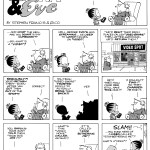OPEC’s oil production tumbled the most in 16 years last month after the worst-ever attack on Saudi Arabia’s energy infrastructure temporarily halved its output. Earlier in the summer, Russia’s Druzhba contamination crisis forced it to make sharp output cuts and U.S. financial sanctions on Iran remain in force.
And yet, Brent crude has averaged around $66 a barrel for most of 2019, far from a price which suggests the world faces an oil shortage. As Russian energy minister Alexander Novak and his newly-appointed Saudi counterpart Prince Abdulaziz bin Salman meet on Wednesday at a conference in Moscow, the world may be wondering whether they’re still pumping too much oil.

“Minister Novak and Prince Abdulaziz recognize they face considerable peril next year” as prices may continue their slide, said Bob McNally, president of Rapidan Energy Group. “Oil-demand growth is hitting the skids as macroeconomic, trade, and political risk drivers continue to intensify, from Brexit to impeachment through Persian Gulf conflict risk and the U.S.-China trade war,” he said.
Oil has just ended its worst quarter since late last year on demand risks, putting pressure on Saudi Arabia, which is heavily dependent on petrodollars and aims to start the initial public offering for its state crude giant Saudi Aramco this month. For Russia’s surplus-running budget, weaker oil is less of a problem yet the country will need full coffers as it plans to increase spending in the next three years to revive its sluggish economy.
Market Reassurance
Meeting at Russian Energy Week, both countries’ energy ministers will likely focus on reassuring the market that the Saudi attacks have left global supply unscathed. They may also advocate for continued production cuts from the Organization of Petroleum Exporting Countries and its allies, Joe McMonigle, Senior Energy Advisor at Hedgeye Risk Management LLC, said.
“I think they will want to plow ahead of keeping OPEC+ cuts in place and will start using concerns about the global economy and trade war to stay the course,” McMonigle said. “This gives an opportunity to provide some lift to prices, especially with the pending Aramco IPO.”
To be sure, Novak and Prince Abdulaziz will be careful when outlining the future of the cuts. As history has shown, “it’s a prerogative of leaders to take such decisions on strategic partnership,” said Ildar Davletshin, London-based energy analyst at Wood & Co.
It was Russian President Vladimir Putin, who announced the most recent extension to OPEC+ production cuts in late June after meeting the Saudi Crown Prince Mohammed Bin Salman in Japan. His statement, made just two days before OPEC+ officially gathered to discuss future cooperation on output curbs, showed it was decisions made by Russia and Saudi which drove action across the whole group.
Putin is also making a keynote speech at the conference, although he’s unlikely to reveal whether Russia intends to commit to further cuts before the extension deadline, in March 2020. Putin said in June that oil at $60-$65 a barrel suits Russia “just fine.”
Whatever efforts Russia and Saudi Arabia may make this week to reassure that they can balance the oil market, they may have to redouble them by the end of the year.
“When we get to December, the outlook for 2020 will seem more oversupplied than it does today,” McNally said. By then, the question will be “less whether Moscow and Riyadh will signal unity and resolve to keep a floor under oil prices next year, but instead whether their signaling and supply policies will be sufficient to keep pace with fast-shifting fundamentals.”




















 Become an Insider
Become an Insider